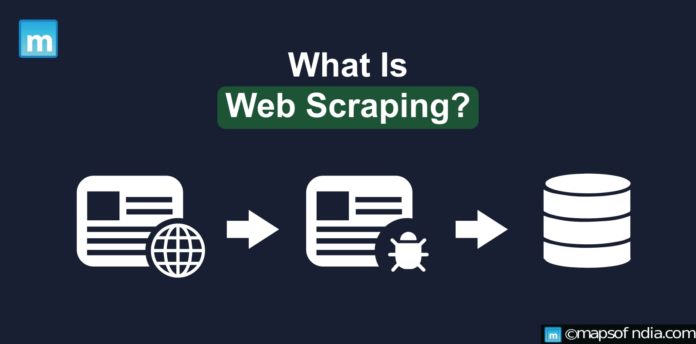Assume you wish to get some details from a website. Let’s write a paragraph on Donald Trump! What are you going to do? You may, however, simply copy and paste the material from Wikipedia into your document. But what if you need to receive significant data from a webpage as soon as possible? How about leveraging massive volumes of data from a webpage to train a Classification Algorithm? In this instance, both copying and replacing will not function! This is precisely where Web Scraping enters in.
Unlike the time-consuming and brain-numbing process of directly obtaining data, Web scraping uses smart, automated techniques to get hundreds, if not millions, of large datasets in a shorter period. So, let’s go through Web scraping in depth and how to utilise it to get information from other web pages.
What is web scraping?
Web scraping is a means of automatically obtaining vast volumes of information from websites. Most of this information is unorganized HTML data turned into structured information in a database or spreadsheet before being utilized in different applications. Web scraping may be done in various methods to gather data from webpages. These include employing internet services, specific APIs, or even writing your web scraping programmes from the start. Many huge websites, such as Twitter, Facebook, Google, StackOverflow, and others, provide APIs that enable you to retrieve structured data. This is the greatest alternative, but some sites do not allow visitors to view big volumes of data in an organised format, or they are just not technologically competent. In that case, scraping the webpage for data using Web Scraping is advisable.
Web scraping involves two components:
A crawler and a scraper. The crawler is an AI-based programme that searches the internet for specific material by following links throughout the internet. On the other hand, a scraper is a tool designed to scrape information from a website. The scraper’s architecture might vary widely depending on the difficulty and extent of the project to retrieve data quickly and reliably.
How do Web Scrapers operate?
Web scrapers may retrieve all of the data on a certain site or the user’s desired information. Ideally, you should describe the required information to ensure that the web scraper gathers only that data rapidly. For example, you might wish to scrape an Amazon webpage for the numerous sorts of juicers provided, but you may just want information on the models of various juicers and not user reviews.
When a web scraper wants to capture a site, the URLs are supplied initially. The scraper then uploads each of the HTML files for these sites, and a more sophisticated scraper may also load each Javascript and CSS components. The scraper then takes the required content from the HTML document and displays it in the format that the user has chosen. Data is frequently captured in an Excel worksheet or a Data file but can also be captured in other formats, such as a JSON file.
Why is Python a widely used Web Scraping language of programming?
Python looks to be popular right now. It is among the most commonly used programming tool for web scraping because it can easily handle most tasks. It also contains a variety of libraries that are specifically developed for web scraping. Scrapy is a well-known open-source web crawling platform built in Python. It is suitable for web scraping and data extraction via APIs. Another Python module that is ideal for web scraping is Beautiful Soup. It generates a parse tree that can be utilized to extract data from a website’s HTML. Beautiful Soup also includes various tools for navigating, finding, and manipulating these parse trees.





